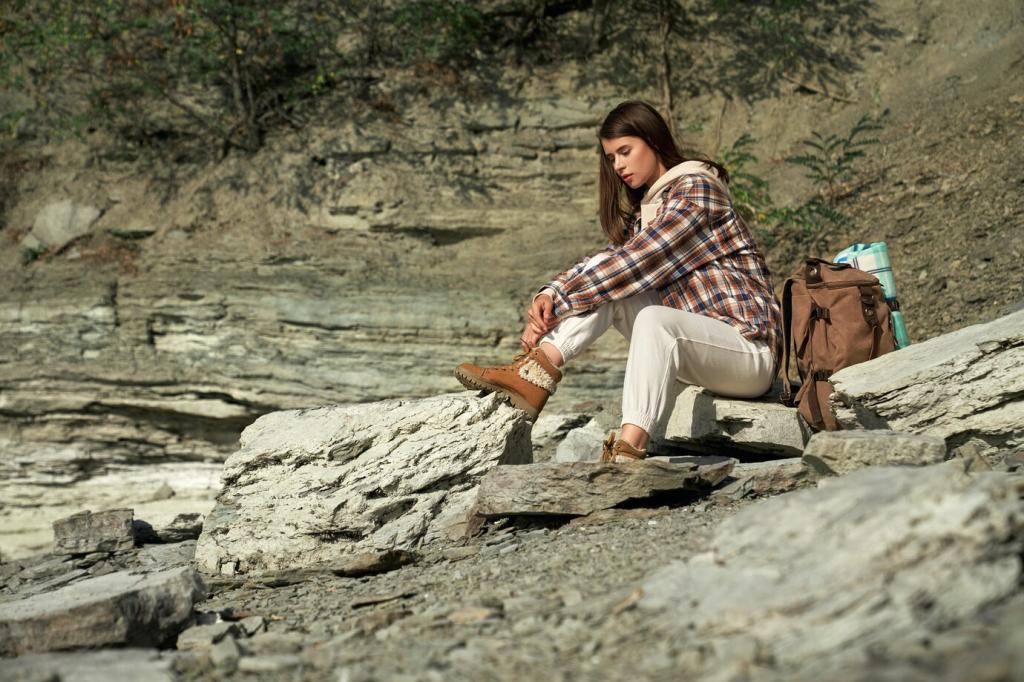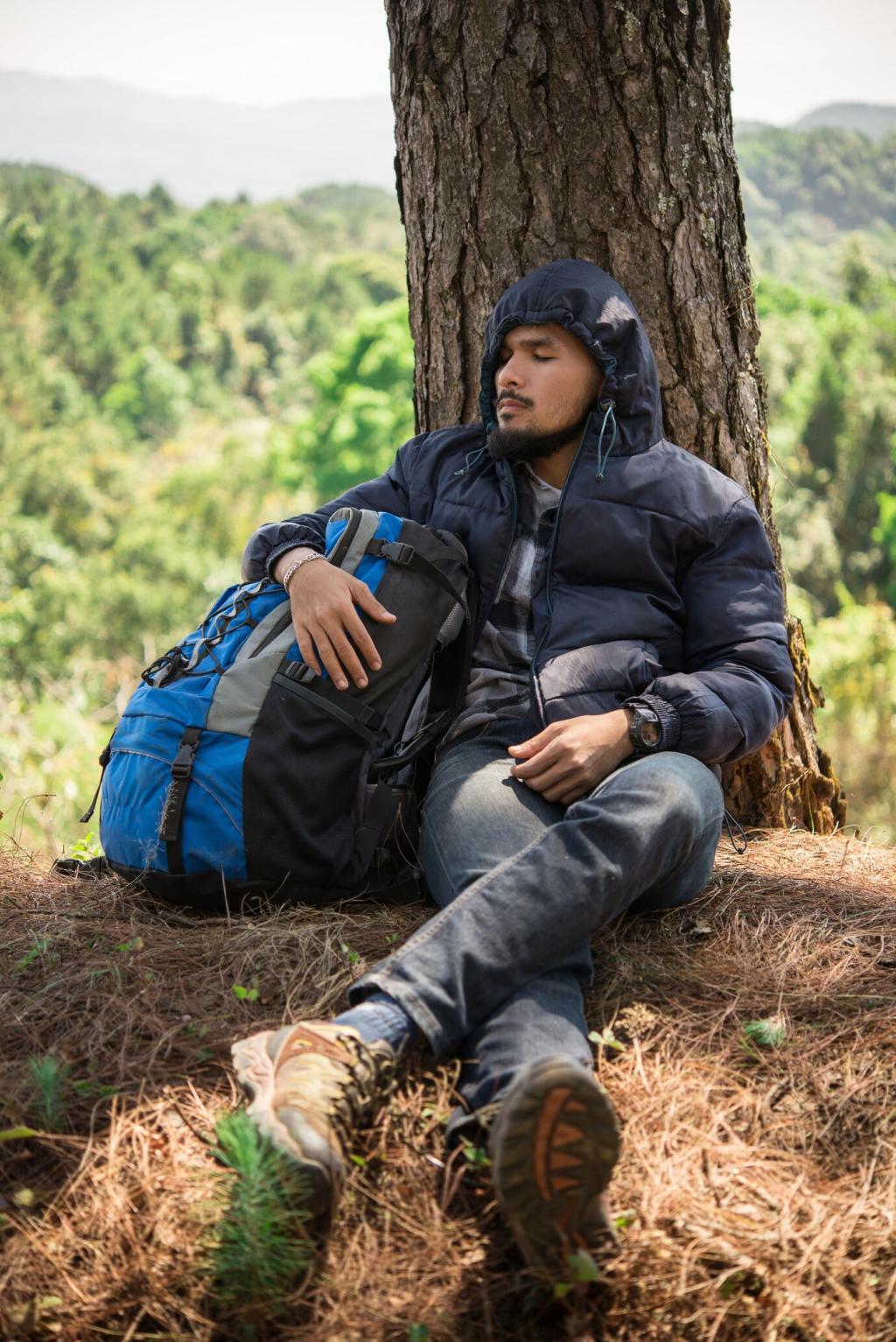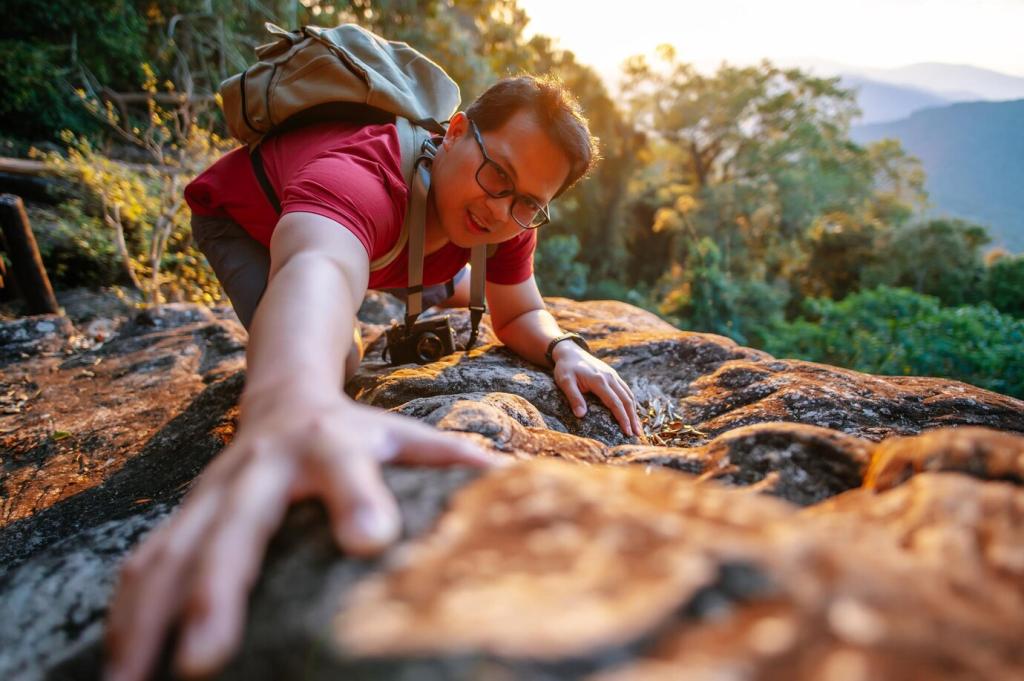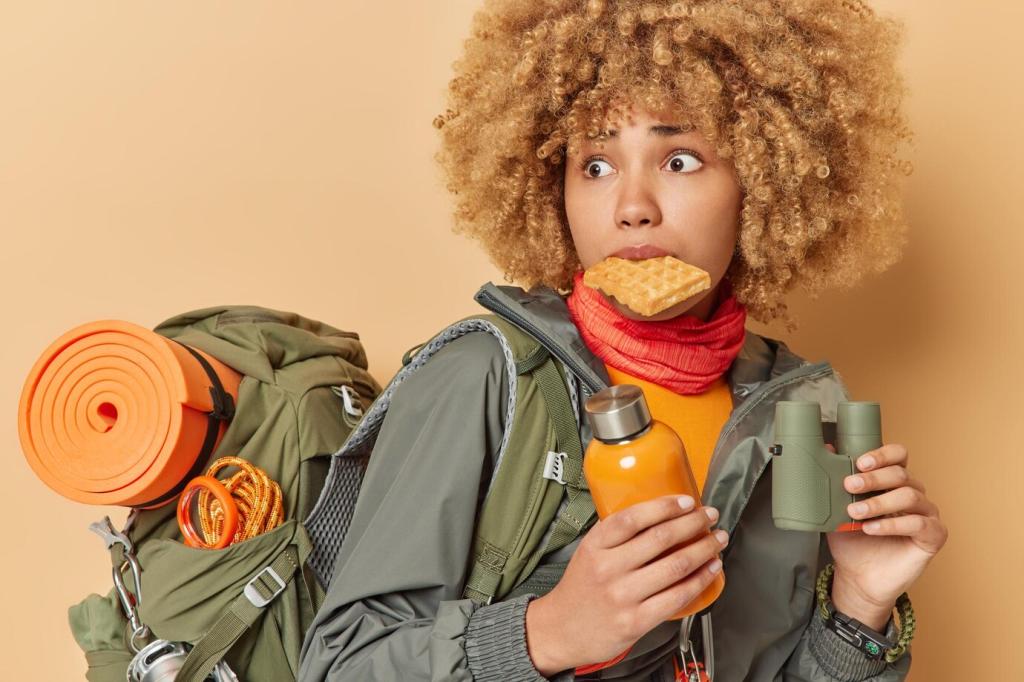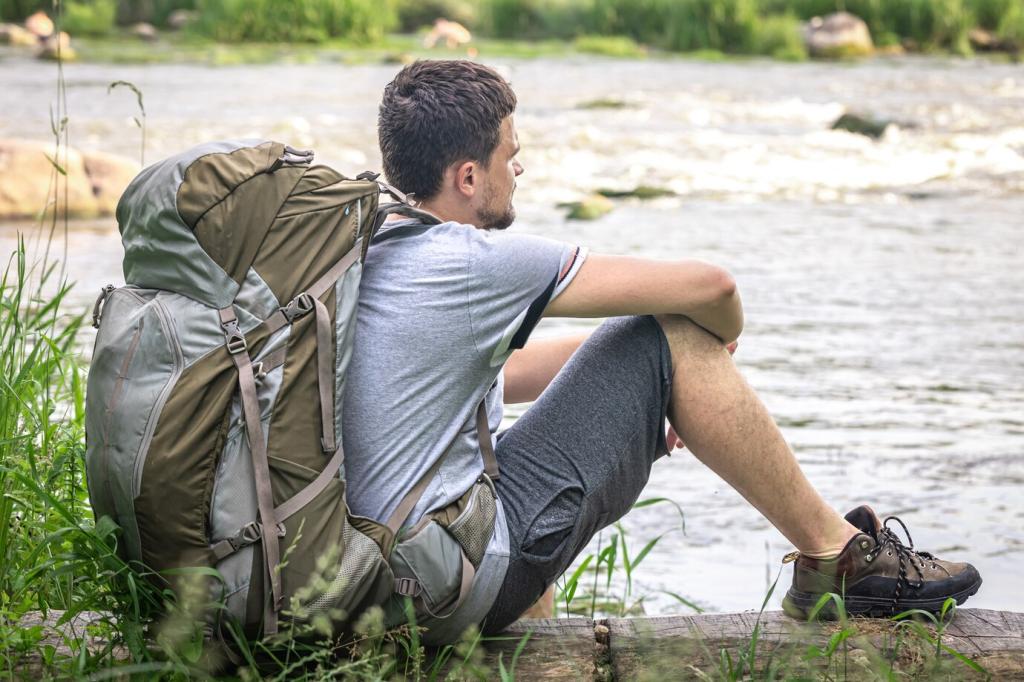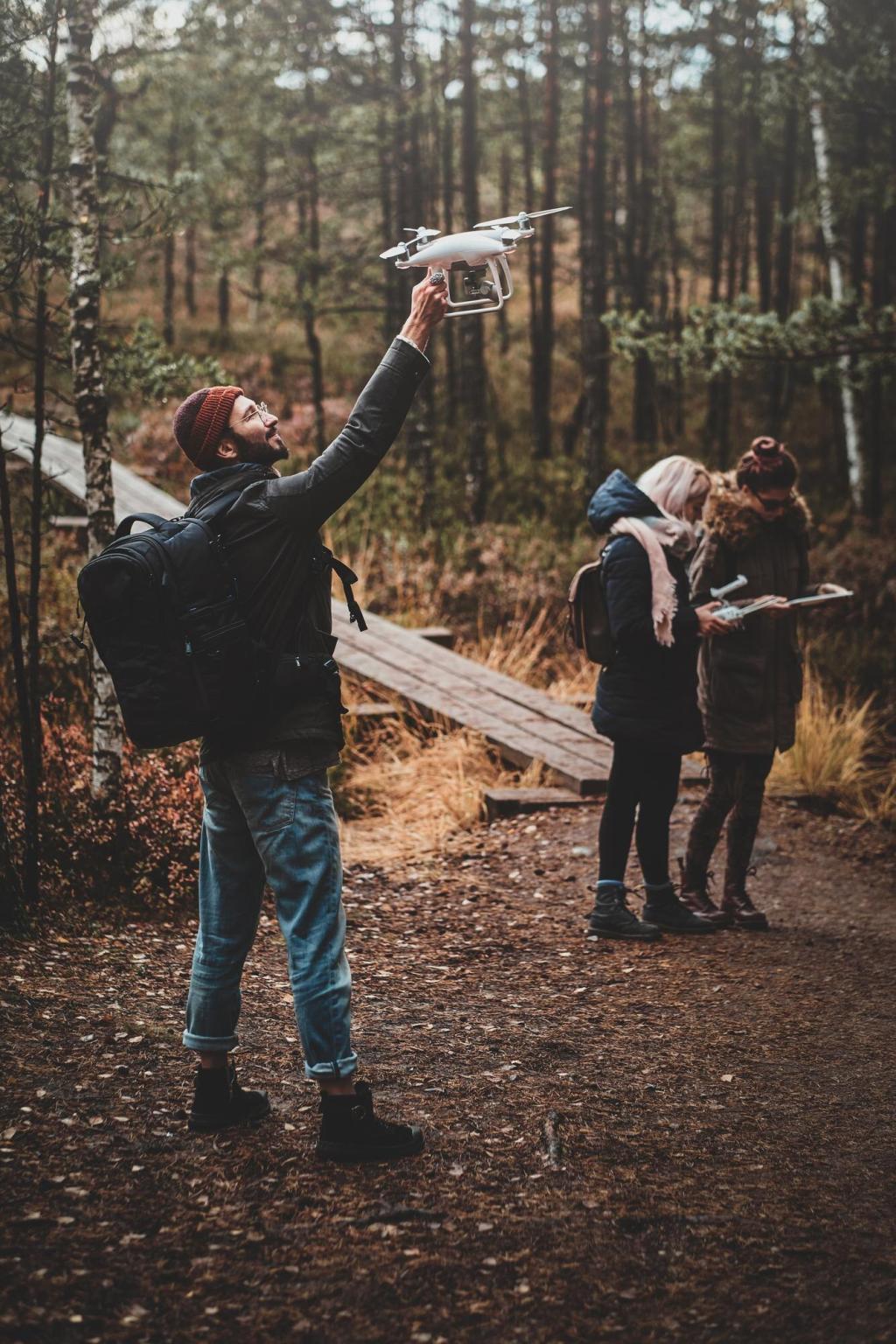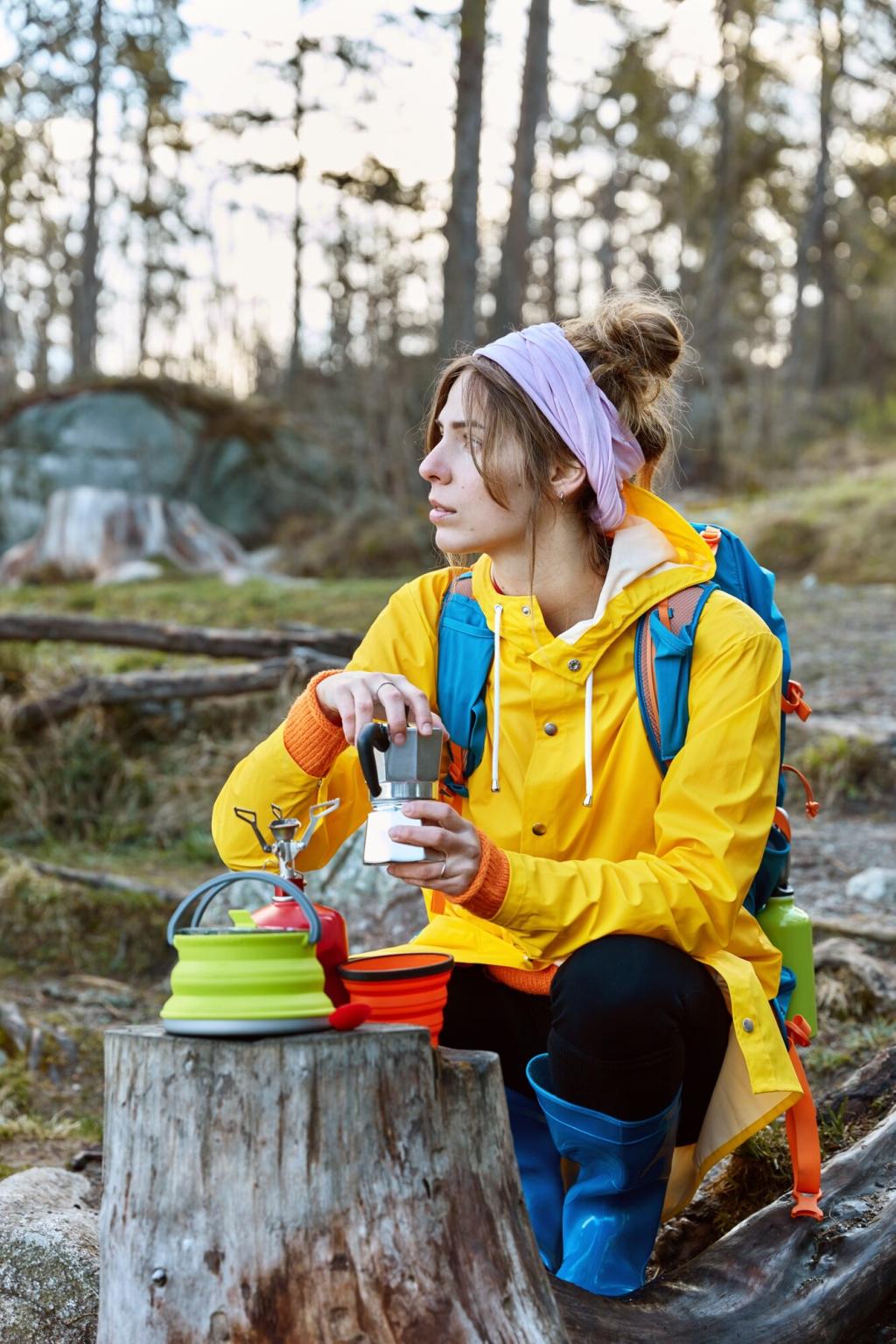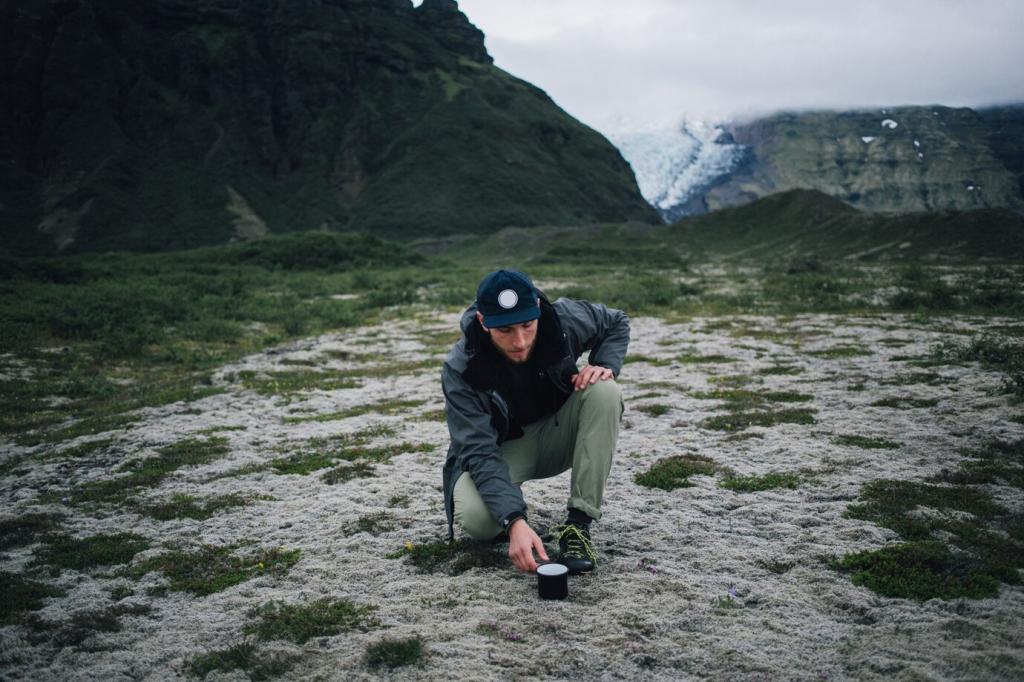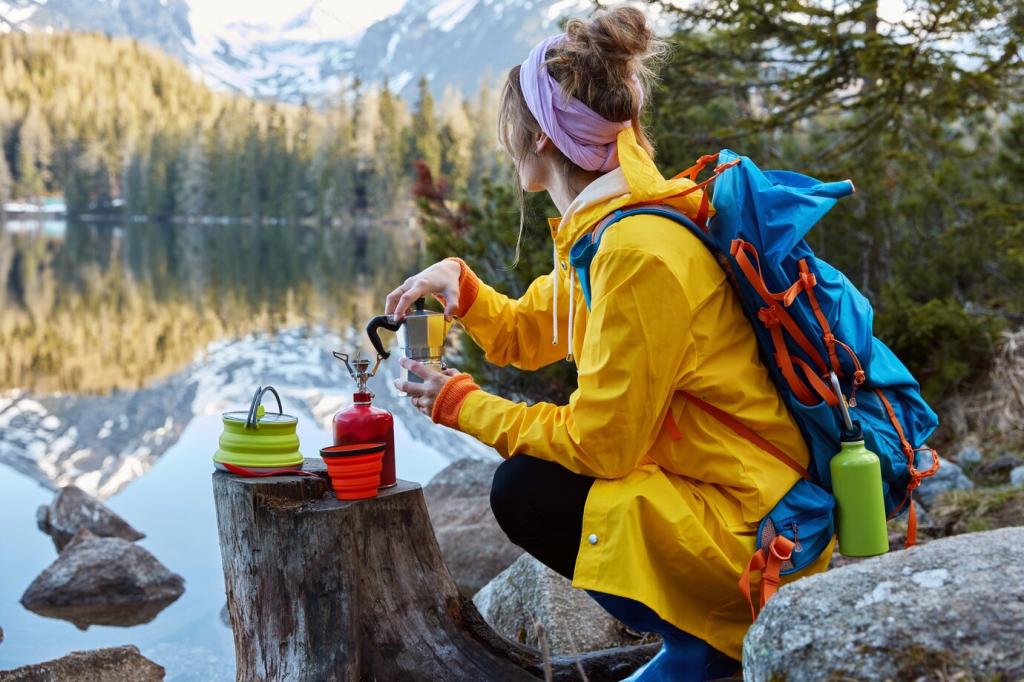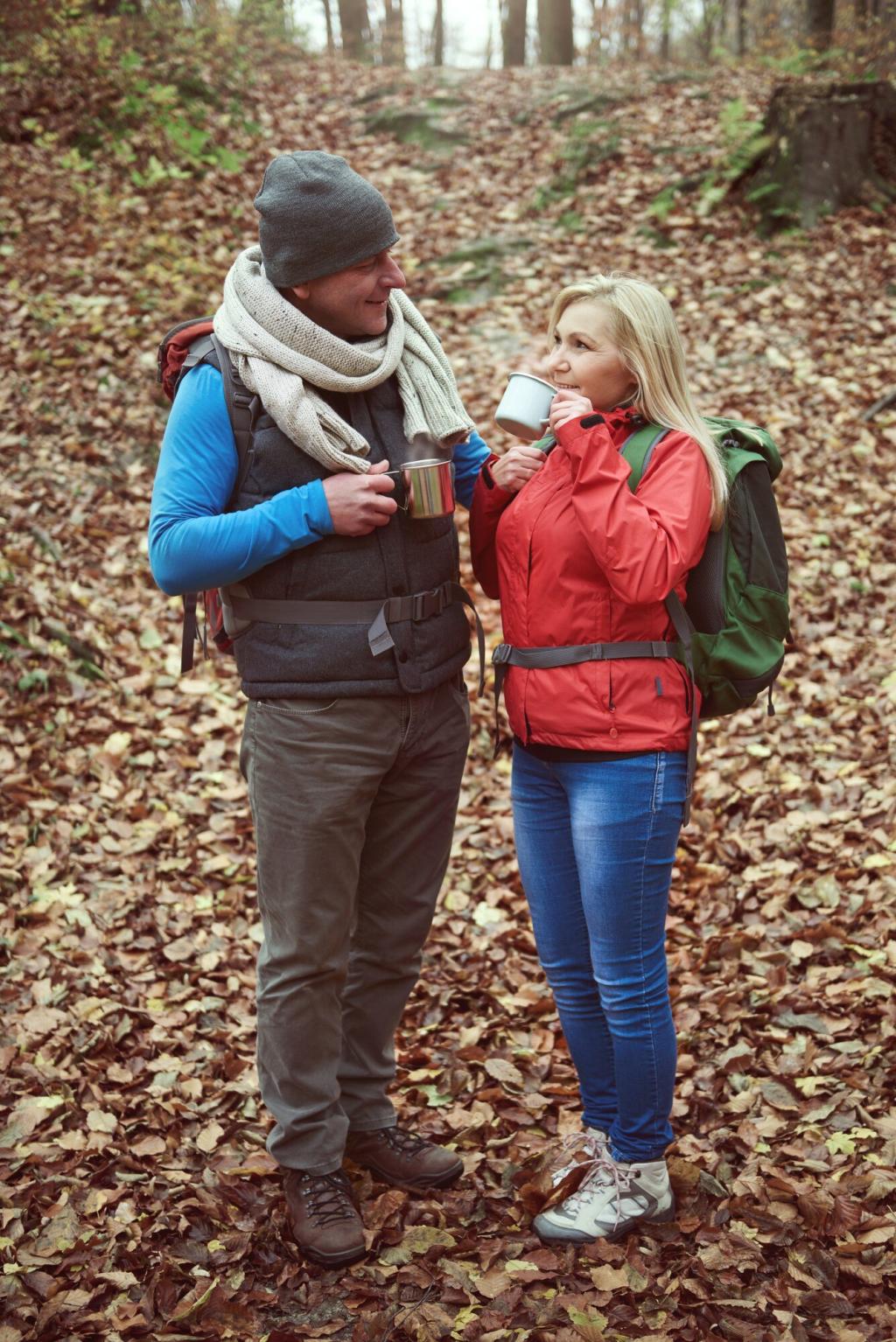Navigation and Shorter Days: Plan, Pace, and Prevail
Download offline maps and carry a paper topo plus a real compass you’ve practiced using. Cold temperatures drain phone and GPS batteries unexpectedly. Mark bail-out routes and water sources. What’s your pre-hike nav routine, and which apps or map scales earn your trust in the mountains?
Navigation and Shorter Days: Plan, Pace, and Prevail
Pack a 300+ lumen headlamp with a warm beam for foggy mist, plus spare batteries kept close to your body for warmth. Avoid relying on your phone’s light—it fails in rain and cold. Tell us your favorite headlamp model and how you preserve battery life on frosty evenings.

